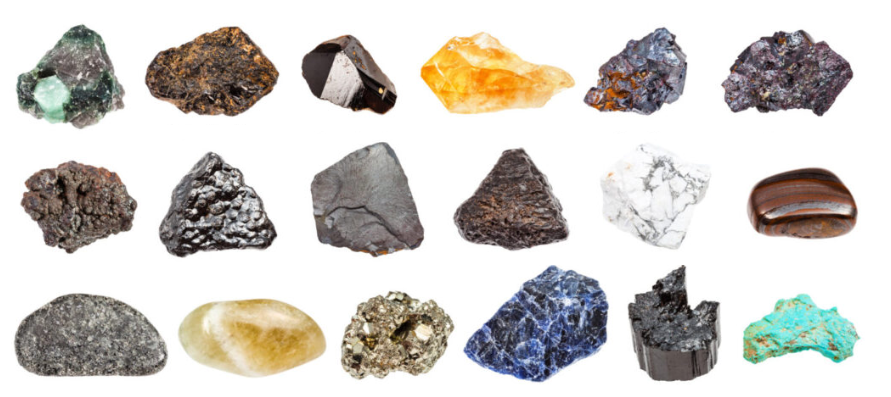WGU C165 OA Study Guide II - 2025 | Understanding the Foundations of Physical Science📖
Welcome to the world of physical science, where rocks, energy, and experiments come together to explain the mysteries of how the universe works! Whether you’re preparing for your WGU C165 OA or just want to unravel the scientific principles behind everyday phenomena, you’re in the right place. In this article, we’ll dig deep into three major concepts: the fascinating types of experiments scientists use to test ideas, the different types of rocks that make up our planet, and the mind-blowing ways energy is transferred in the world around us.
This article explores three fundamental scientific concepts that help us understand the world around us:
- Types of Experiments: Experiments are a crucial part of scientific inquiry, and they come in different forms, including controlled experiments, field experiments, and observational studies. Each type has its unique approach to testing hypotheses and gathering data.
- Types of Rocks: The Earth’s crust is made up of different types of rocks, classified into three main categories—igneous, sedimentary, and metamorphic. These rocks form through various geological processes and provide insight into the history of our planet.
- Energies and How They Are Transferred: Energy exists in many forms—kinetic, potential, thermal, chemical, and more. Understanding how energy is transferred through conduction, convection, and radiation helps explain natural phenomena and technological advancements.
We go from beginning to end of each topic while providing basic explanations which also incorporate some humor to maintain interest. The course will equip you to master WGU C165 through easy-to-grasp lesson explanations along with basic explanations of daily energy usage and experiment controls (which do not include magic wands). A scientific journey awaits you without any need for laboratory attire!
How to Use This Guide for the WGU C165 OA Exam? 📖
The C165 Integrated Physical Sciences OA exam at WGU evaluates your understanding of scientific inquiry, experimental design, and the fundamental concepts of physical sciences. This guide simplifies the key concepts of types of experiments (controlled, field, observational), types of rocks, and how energy is transferred to help you grasp the topics tested in the exam.
We also provide exam-style questions and practical applications to ensure you’re fully prepared for the questions on the WGU C165 OA exam.

Types of Experiments in Integrated Physical Sciences for C165 OA 📝
Science heavily relies on experiments as its fundamental practice. The process enables scientists to apply their theories as tests to investigate natural events and collect evidence to better understand the world. When studying WGU C165 you will encounter various fundamental experimental types used in scientific research operations. Each experiment serves a different purpose and is used in various scenarios depending on the research question. Let’s dive into the types of experiments you need to understand!
What is an Experiment?
Science laboratories employ experiments as they function to probe questions or hypotheses that scientists want to study. The process includes variable control through interventions as well as outcome assessment and result monitoring. Scientific experiments show scientists the direct associations between different components that link their actions and effects.
Here’s a simple breakdown of an experiment’s basic components:
- Independent Variable: The factor you change in the experiment (e.g., the amount of sunlight).
- Dependent Variable: The factor that is measured (e.g., the growth of a plant).
- Control Variables: All the other factors that are kept constant to ensure a fair test (e.g., soil type, water, temperature).
Now that we understand the basics, let’s look at the different types of experiments!
1. Controlled Experiments
Scientists perform controlled experiments by managing all elements except a single variable to check its influence on the dependent aspect. Experiments that control all factors except one represent the most frequently conducted research design.
Key Features:
- Manipulated Independent Variable: Only one variable is changed.
- Control Group: A group where the variable is not manipulated, used for comparison.
- Experimental Group: A group where the independent variable is manipulated.
Example: Imagine you want to know how light affects plant growth. You set up two groups of plants:
- Control Group: Plants that get normal sunlight.
- Experimental Group: Plants that get extra sunlight.
By comparing both groups, you can see how different amounts of sunlight affect the growth of plants.
Why Use Controlled Experiments?
By containing all but one variable experiments deliver clear and dependable outcomes which prove effective for laboratory testing of hypotheses. The experimental method enables scientists to identify particular variables while they explore their individual influences.
2. Field Experiments
The execution of field experiments takes place in outdoor settings as opposed to lab-based environments. Lab experiments enable researchers to observe variable relationships as they exist within natural environments containing numerous unmanaged factors.
Key Features:
- Conducted in natural environments (e.g., forests, oceans, cities).
- Scientists observe and measure phenomena in real-world settings.
Challenges:
- Harder to control variables, like weather or animal behavior.
- Results can be influenced by many unknown factors.
Example: Researchers studying how pollution affects plant growth might conduct a field experiment in an area with varying levels of pollution. They can measure the health of plants across different areas, but they can’t control the pollution levels perfectly.
Why Use Field Experiments?
Field experiments deliver data that reveals actual-world behavior patterns of phenomena. Such experiments are suitable for observing intricate systems which laboratory reproduction methods prove impossible.
3. Observational Studies
In an observational study, researchers observe and record what happens naturally without altering any variables. Unlike controlled experiments, there’s no manipulation—just observation.
Key Features:
- No changes are made to the variables.
- Data is collected by watching and recording events as they happen.
Example: A scientist might study how animals behave in the wild. They don’t intervene in any way; they simply watch the animals and take notes about their behavior.
Why Use Observational Studies?
These studies are ideal when manipulating variables would be impossible or unethical, like in human behavior studies. They allow scientists to gather real-world data without disturbing the natural environment.
4. Randomized Controlled Experiments
A randomized controlled experiment (RCE) is a special type of controlled experiment where participants or subjects are randomly assigned to different groups. Randomization helps to eliminate bias.
Key Features:
- Random Assignment: Participants are randomly placed in either the experimental or control group.
- Control Group: No change is made to this group.
- Experimental Group: The independent variable is manipulated.
Why Use Randomized Controlled Experiments?
Randomization helps ensure that the results are not influenced by personal biases or confounding factors. This makes the results more reliable and generalizable.
5. Quasi-Experiments
The methodology in a quasi-experiment resembles controlled experiments but excludes the utilization of random assignment into groups. Researchers perform this type of study when random assignment proves impractical or unethical for their research methods.
Key Features:
- No Randomization: Participants are not randomly assigned.
- Pre-existing Groups: The groups are based on real-world divisions (e.g., schools, communities).
Example: Two schools represent the subjects of educational research where one teaches with a fresh approach while the other uses traditional methods. Since random assignment of the schools is not possible this study uses a quasi-experimental approach.
Why Use Quasi-Experiments?
Quasi-experiments are valuable when researchers can’t randomly assign participants but still want to compare groups and see how variables might affect outcomes.
The fundamental knowledge required for WGU C165 students will be presented in this section about types of rocks that explore planet-building substances.
Types of Rocks: The Building Blocks of Earth for C165 OA📝
Does a traditional rock hide any secrets from your eyes? Rocks represent solid yet remarkable Earth pieces that offer historical and formation insight into our planet. The section explains sedimentary igneous and metamorphic rocks together with their formation methods and explains how pressure transforms rocks. Necessary for WGU C165 learners and anyone interested in rock formation is the knowledge of these basic rock types to study the earth’s natural composition.

What Are Rocks Made Of?
It is essential to understand rock composition before examining different rock types. Natural occurring solid materials known as rocks consist of at least one mineral constituent. Naturally occurring substances that are inorganic along with specific atomic structure and chemical composition make up minerals. Rocks use their constituting minerals to develop their specific qualities.
The Rock Cycle
The Earth transforms its rocks through an endless rock cycle that continues all the time. Time-driven rock conversions between different rock types result from pressure together with heating effects and weathering processes.
How Does Pressure Affect Rocks?
- Metamorphic Rocks: These form when existing rocks are subjected to intense heat and pressure deep within the Earth. The pressure comes from the weight of overlying rocks, which causes changes in the rock’s texture and structure.
- Sedimentary Rocks: Rocks develop into sedimentary rocks after sediments experience gradual compression pressure throughout centuries. Building pressure from sediments transforms them into solid geologic rock.
- Igneous Rocks: These rocks are formed when molten rock (magma or lava) cools and solidifies. Pressure plays a role in determining how the magma or lava cools and what texture the rock will have.
Types of Rocks
Now, let’s break down the three main types of rocks: Sedimentary Rocks, Igneous Rocks, and Metamorphic Rocks. Each type forms through different processes and has its own characteristics.
1. Sedimentary Rocks
Formation: Sedimentary rocks form from the accumulation and compression of sediments over time. These sediments can be bits of other rocks, minerals, or organic materials like plant and animal remains.
Key Features:
- Sediments are compacted by pressure over time, forming solid rock.
- Often have layers (called strata) and may contain fossils.
Examples:
- Sandstone: Formed from sand particles that are cemented together.
- Limestone: Often forms in shallow marine environments from the accumulation of calcium carbonate.
Texture:
- Sedimentary rocks typically have a layered appearance and may show signs of ancient environments, like ripple marks or cross-bedding.
2. Igneous Rocks
Formation: Igneous rocks form from the cooling and solidification of molten rock, either beneath the Earth’s surface (magma) or on the surface (lava).
Key Features:
- Magma that cools slowly beneath the Earth’s surface forms coarse-grained (large crystal) rocks.
- Lava that cools quickly on the surface forms fine-grained (small crystal) rocks.
Examples:
- Granite (Intrusive): Formed from slowly cooled magma below the surface, with large crystals.
- Basalt (Extrusive): Formed from quickly cooled lava, with small crystals or a glassy texture.
Texture:
- Igneous rocks can have a crystalline texture, where the minerals are interlocked and visible to the naked eye.
3. Metamorphic Rocks
Formation: Metamorphic rocks develop when existing rocks including sedimentary and igneous and metamorphic rocks undergo intense heat and pressure that leads to modification of either mineral composition or structural properties.
Key Features:
- Metamorphism occurs deep within the Earth, where both heat and pressure are intense.
- These rocks can be foliated (layered or banded) or non-foliated (without layers).
Examples:
- Schist (Foliated): A metamorphic rock with visible layers and a shiny appearance due to the alignment of minerals.
- Marble (Non-Foliated): Formed from the metamorphism of limestone and has a smooth, even texture.
Texture:
- Foliated Rocks: These rocks show visible layers or bands due to the alignment of minerals under pressure.
- Non-Foliated Rocks: These rocks have a uniform texture with no visible layers.
The Role of Pressure in Rock Formation
All three rock types require pressure to develop during their creation process. The intense underground pressures of the Earth force existing rocks to undergo structural changes and modifications of minerals. During the development of sedimentary rocks high pressure transforms loose sediment deposits into hard solid rocks. The crystals in forming igneous rocks depend on both pressure together with temperature of molten rocks during cooling.
Next, we’ll explore the fascinating world of energies and how they are transferred, a crucial concept in WGU C165 that helps explain the workings of everything from machines to natural phenomena.
Tired of reading blog articles?
Let’s Watch Our Free WGU C165 Practice Questions Video Below!

Energies and How They Are Transferred for C165 OA📖
Energy is all around us. All our furniture along with our cellular functions derives from this power which keeps moving across various stages of existence. Energy continuously works between your microwave heating session and roadway car observation. This section explains different energy types along with their energy transfer mechanisms while discussing the energy conservation principle as the universal mechanism for energy change.
What Is Energy?
According to the principles of physics, the fundamental nature of energy serves to perform work. A force applied to an object leads to work through movement or alteration of object conditions. Work depends on energy as a basis while different energy variations exist. The law of conservation of energy states how energy survives because it transforms through various forms which helps us comprehend our natural environment.
Forms of Energy for C165 OA
There are several different forms of energy, each with its own unique characteristics. Let’s take a closer look at the most common types of energy:
- Potential Energy: The stored energy contains potential work capabilities. The specific energy stems from an object that can be situated at a particular position or existing state. A book positioned above the ground possesses potential energy because it can utilize that stored energy to generate kinetic energy upon falling.
- Kinetic Energy: This is the energy of motion. Any object in motion—whether it’s a rolling ball, a speeding car, or even molecules vibrating in the air—has kinetic energy.
- Chemical Energy: This is the energy stored in the bonds of molecules. For example, when you eat food, your body breaks down the molecules to release chemical energy, which your body uses for various functions.
- Electrical Energy: This is energy that comes from the flow of electric charge. It’s what powers your electronic devices and lights up your home.
- Thermal Energy: This is the energy of heat. A substance contains higher thermal energy based on how fast its particles travel through it. Water heated to boiling temperature possesses higher amounts of thermal energy than water maintained at lower temperatures.
- Radiant Energy: This is energy carried by light and other types of electromagnetic radiation, such as radio waves or X-rays. This is the energy that allows us to see and powers solar panels.
Work and Energy
Energy shares a direct relationship with the performance of work. A force moving an object during a specific distance qualifies as work. Work requires energy transfer from a different source of power because energy flows directly from the work performance. Your effort during sled pushing results in work because you exchange body energy which transforms into potential energy stored within the sled at the hill summit.
Energy Stores and Transfers
Energy can be stored in different forms within a system, and it can also be transferred in various ways. Here’s an overview of both:
Energy Stores:
- Kinetic Energy: The energy of motion.
- Gravitational Potential Energy: The energy stored due to an object’s height.
- Elastic Potential Energy: The energy stored in stretched or compressed objects, like a spring or rubber band.
- Chemical Energy: Stored in the bonds of molecules.
- Magnetic Energy: Stored in magnetic fields.
- Electrostatic Energy: Stored in electric fields between charged particles.
- Thermal Energy: Energy stored as heat.
Energy Transfer Pathways:
- Mechanical Work: When energy is transferred through force, like when pushing a cart.
- Electrical Work: When energy is transferred through the flow of electricity, like in electrical circuits.
- Heating: When energy is transferred as heat, such as heating a pan on the stove.
- Radiation: When energy is transferred in the form of light or electromagnetic waves, such as sunlight warming your skin.
Energy Transfer Types
Energy is transferred in several ways, depending on the form and the situation. Here are the key types of energy transfer:
- Conduction: The transfer of heat through a material. This occurs when molecules in a heated part of the material vibrate and pass on their energy to neighboring molecules.
- Convection: Heat passes through liquids and gases through movements of fluids. Heat from warm fluids along with water creates vertical motions through which cooler fluids drop leading to convection current formation.
- Radiation: The transfer of energy through electromagnetic waves. The ability to transfer heat by radiation occurs independently of medium requirements thus making it possible for space radiation to travel even through a vacuum state. The sun’s energy passes to Earth through this method.
Conservation of Energy
Energy remains constant because it follows a principle that demonstrates its transformation instead of its production or elimination in physics. The action of braking a car results in a conversion of its kinetic energy into thermal energy through frictional mechanisms. The conversion process does not lead to any energy loss since all energy transfers to heat but the overall energy stays unchanged.
Applying the Law of Conservation of Energy:
- When a roller coaster moves down a track, potential energy is converted into kinetic energy.
- In a light bulb, electrical energy is converted into light energy and thermal energy.
The law functions as an essential foundation for tracking system energy movements because engineers utilize it to determine machine performance efficiencies and evaluate technological energy systems.

Wrapping Up Your Journey Through Physical Science: Master These Concepts for WGU C165 OA Success📖
Congratulations! You’ve just explored some of the most important topics in WGU C165—from the fascinating world of experiments to understanding the types of rocks and how energy moves and changes. By grasping these concepts, you’re not only strengthening your understanding of physical science but also preparing yourself for success in your WGU C165 OA.
All three key subjects of the course—experiments and rocks and energy—will appear in your final assessment evaluation because they form the essential foundation of this learning material. You should step through these ideas while reviewing them thoroughly and perform conceptual tests metaphorically as the primary method. Your learning success in both rock cycle studies and energy conservation laws depends on any helpful piece of information you can collect. Best wishes for the successful completion of your WGU C165 studies as we want you to master your WGU C165 Objective Assessment questions with absolute confidence!
Good luck, future scientists! You’ve got this!






